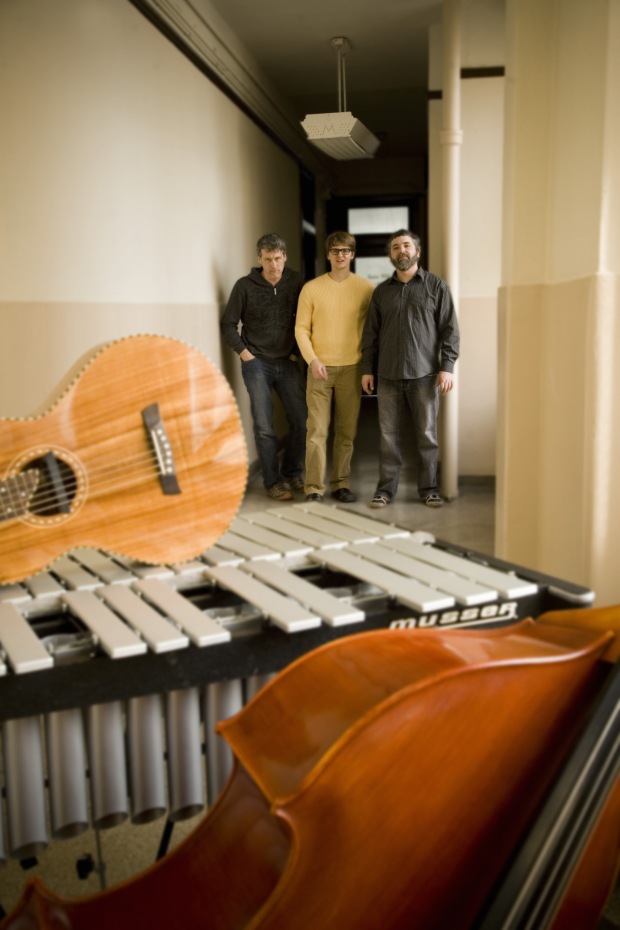Back in the 1950s, jazz titans vibraphonist Red Norvo, electric guitarist Tal Farlow, and bassist Charlie Mingus (and later, Red Mitchell) created a groundbreaking trio with a unique, fresh sound. These three virtuosos proved the viability of the format combining clever arrangements with fire-breathing solos, often at breakneck tempo. Their recordings remain an exquisite, timeless document of chamber jazz perfection.
The Minnesota-based Neighborhood Trio revives this classic format with stunning results that combine jazz with country, pop and soul influences. The Trio features Steve Roehm on vibraphone, Andrew Foreman on upright bass, and Dan Schwartz on Weissenborn acoustic steel and vocals. While the Norvo Trio emphasized the virtuosity of the soloists for TNT, it’s all about laidback grooves and texture. The group projects an organic, interconnected rootsy sound that relies on each musician to supply an essential thread of the musical tapestry.
Their gigs mix fresh-sounding, ethereal originals with eclectic covers of everyone from Bill Withers, Tom Waits, Hank Williams, Willie Nelson, Al Green and Marvin Gaye to a killer version of the ‘60s AM radio classic, Ooh Child, by the Five Stairsteps (recently revived for the climax of the hit movie Guardians of the Galaxy). In some ways, their groove-oriented playing reminds me of a airy, funk-light version of electric “groovemiesters” Medeski, Martin and Wood.

The trio’s self-titled 2011 CD release is a showcase for their musicianship, taste and preference for focusing first, on delivering the song while still demonstrating obvious chops and soloing ability. On their laidback, groovy cut Shag, Schwartz alternates between playing back-up with unison lines with the vibes. Puddles very effectively showcases melodic lines from the steel against a pedal point pattern from the vibes. Roehm’s fluent, cliché-free vibraphone playing is a standout. First Impression swings gently with Roehm laying out a jazzy melodic line followed by a conversational, voice-like single note response from Schwartz’s steel. Conundrum showcases Roehm’s taste and technique with fluent, floating lines that always stay grounded as part of the ensemble. Bassist Foreman is the glue of the group, always contributing mightily to the feel and supporting the other instruments.
As a showcase for the Weissenborn, the group shows how powerful, and capable a musical instrument it can be in this unexpected context. All-in-all, The Neighborhood Trio is a recording that, while harkening back to a classic jazz group, brings a fresh, modern perspective that combines great taste, creativity and restraint to prove the adage that the musical whole is indeed more than the sum of its parts.
Andy Volk is an award-winning Boston-based television producer/director, writer, designer and musician. He’s the author of the books Guitar Dreams, Lap Steel Guitar (Centerstream/Hal Leonard), and Slide Rules and co-author (with John McGann) of Joaquin Murphey: Classic Western Swing Steel Guitar Solos. Volk is a also contributing writer to The Fretboard Journal and Acoustic Guitar as well as various online venues.



